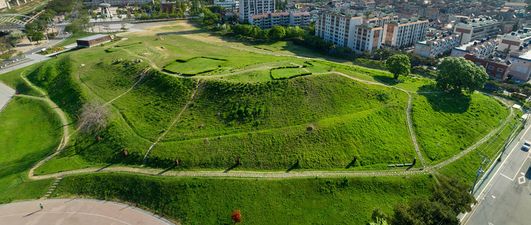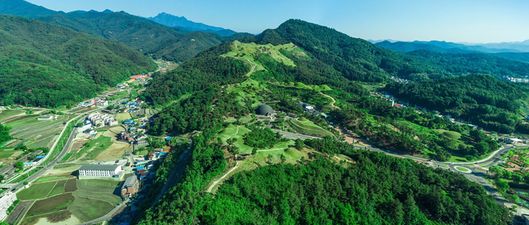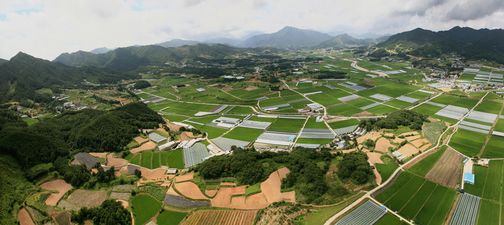"가야고분군"의 두 판 사이의 차이
(→영문) |
|||
| 36번째 줄: | 36번째 줄: | ||
===영문=== | ===영문=== | ||
| − | '''Gaya Ancient Tombs''' | + | '''Gaya Ancient Tombs''' |
The Gaya Ancient Tombs collectively refers to seven burial complexes constructed during the period of the Gaya confederacy (42-562) in the southern region of the Korean Peninsula. They are located in Gimhae, Haman, Hapcheon, Goseong, and Changnyeong of Gyeongsangnam-do Province, Goryeong of Gyeongsangbuk-do Province, and Namwon of Jeollabuk-do Province. | The Gaya Ancient Tombs collectively refers to seven burial complexes constructed during the period of the Gaya confederacy (42-562) in the southern region of the Korean Peninsula. They are located in Gimhae, Haman, Hapcheon, Goseong, and Changnyeong of Gyeongsangnam-do Province, Goryeong of Gyeongsangbuk-do Province, and Namwon of Jeollabuk-do Province. | ||
2023년 6월 15일 (목) 10:47 기준 최신판
| 가야고분군 Gaya Ancient Tombs |
|
| 대표명칭 | 가야고분군 |
|---|---|
| 영문명칭 | Gaya Ancient Tombs |
| 한자 | 伽倻古墳群 |
| 웹사이트 | 가야고분군 세계유산등재추진단 |
해설문
국문
가야고분군은 입지와 군집, 묘제와 부장품을 통해 1세기부터 6세기까지 한반도 남부지역을 중심으로 번성했던 가야의 정치, 문화를 집약해서 보여주는 가야 지배층의 무덤들이다.
이 시기 동아시아 여러 국가들은 서로 경쟁하며 중앙집권적 고대국가로 발전해 나갔으나, 가야 각국들은 독립적이고 평등한 관계를 유지하면서도 상호교류를 통해 문화를 공유하는 연맹왕국을 형성하였다. 이들은 생활, 생산기술, 장례의식을 통해 각국의 정체성을 표현하고 동질감을 나타내었다. 고분에 부장된 각종 물품은 가야 각국의 문화적 특성을 반영하고, 동아시아 각국과의 교류관계를 뚜렷하게 보여준다.
가야는 동아시아 고대국가 형성기의 여러 정치 형태 중에서 연맹왕국의 실체를 보여주는 대표적인 사례이며 가야의 7개 고분군은 이를 구체적으로 증명하는 독보적인 증거이다.
영문
Gaya Ancient Tombs
The Gaya Ancient Tombs collectively refers to seven burial complexes constructed during the period of the Gaya confederacy (42-562) in the southern region of the Korean Peninsula. They are located in Gimhae, Haman, Hapcheon, Goseong, and Changnyeong of Gyeongsangnam-do Province, Goryeong of Gyeongsangbuk-do Province, and Namwon of Jeollabuk-do Province.
The Gaya confederacy evolved out of the small tribal states scattered around the Nakdonggang River basin. Although other states in East Asia at that time typically competed with each other to develop into ancient kingdoms with centralized systems of political power, the members of the Gaya confederacy maintained their own independent and equal sovereignty and established a shared culture through active exchange.
The tomb structures and artifacts found in the Gaya Ancient Tombs attest to the cultural similarities between the member states, as well as their exchange with other kingdoms in East Asia.
영문 해설 내용
가야고분군은 가야 시대(42-562)에 조성된 7개의 고분군을 말한다. 이 고분군들은 경상남도의 김해, 함안, 합천, 고성, 창녕과 경상북도의 고령, 전라북도의 남원 등 한반도 남부 지역에 분포되어 있다.
가야는 낙동강 유역에 자리 잡은 작은 나라들이 형성한 연맹왕국이었다. 이 시기 동아시아의 여러 국가들은 서로 경쟁하며 중앙집권적인 고대국가로 발전했으나, 가야연맹의 국가들은 서로 독립적이고 평등한 관계를 유지하면서, 상호교류를 통해 문화를 공유하였다.
가야고분군의 조성 양식과 출토 유물 등은 가야연맹이 서로 유사한 문화를 이룩하였음을 구체적으로 증명하며, 동아시아 각국과의 교류 관계를 파악할 수 있게 한다.
갤러리
가야의 공간적 범위[1]







